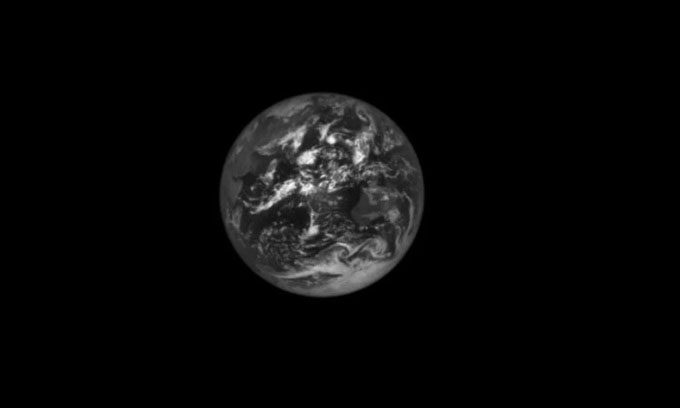NASA Shares Stunning Image of Earth Captured by Lucy Spacecraft on Journey to Ancient Asteroids.

Earth stands alone against the black backdrop of space. (Photo: NASA)
The Lucy Spacecraft took a distant photograph of Earth on October 15, 2022, during a calibration sequence at a distance of 620,000 km. In the black-and-white image, Earth is highlighted by cloud formations resembling marble veins, contrasting sharply with the dark expanse of space. The upper left portion of the image features Hadar, Ethiopia, the homeland of the 3.2 million-year-old fossil of our human ancestor after which the spacecraft is named, according to NASA.
Lucy is the first mission to explore Jupiter’s Trojan asteroids, a group of ancient celestial bodies that orbit the Sun at a similar distance to Jupiter. To reach these asteroids, the trajectory of the Lucy spacecraft includes three gravitational assists from Earth to gain speed on its journey.
The image was captured using the Terminal Tracking Camera (T2CAM) onboard Lucy, a pair of identical cameras responsible for tracking asteroids during high-speed flybys. The T2CAM system was designed, built, and tested by Malin Space Science Systems. Lockheed Martin installed the T2CAMs on the Lucy spacecraft and is responsible for their operation.
On October 13, 2022, NASA’s Lucy spacecraft also captured images of Earth and the Moon from a distance of 1.4 million km. These flybys of Earth provide the spacecraft with the necessary speed to reach the Trojan asteroids. Lucy was launched in late 2021. Over its 12-year mission, Lucy will fly by a record number of asteroids and survey their diversity, searching for clues to better understand the formation of the Solar System.


















































